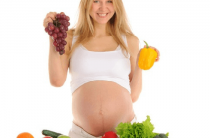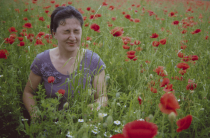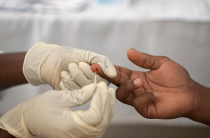Allergy in infants is a specific immune response, as a result of which, instead of inactivating foreign proteins, the body suffers from an incorrect reaction to harmless protein components. The child may be sensitive to certain foods, cat hair or house dust. This happens because the mechanism by which the immune system distinguishes harmful substances from harmless ones is disrupted. Allergens can enter the baby's body when breastfeeding. This happens if the mother does not follow special dietary procedures.
Causes of allergies in babies
An allergic reaction occurs when an allergen enters the body. It can be inhaled through inhaled air, skin contact or food. In response to this, the body of the baby begins to produce antibodies. They are also proteins, so they form a single complex with allergens, with great ease. This complex serves as a kind of signaling system, the main task of which is the production of histamine. And now histamine, released in response to the allergen, changes the metabolism of cells of various tissues, causing the development of allergy symptoms.
Histamine-sensitive cells are found in many tissues and organs. This causes a variety of allergy symptoms in infants. They may include: skin rashes, tearfulness, allergic rhinitis, gastrointestinal disorders and other manifestations.
If a baby has rashes on the skin, this is a signal that it is necessary to consult an allergist. This specialist will conduct initial examinations of the well-being of the baby and prescribe special tests. The purpose of these events is to confirm the presence of an allergic reaction, as well as to establish the substance that provokes it.
A common manifestation of an allergy in a child is a skin rash. Allergens that affect the baby can be divided into two types: internal and external. Internal factors include food, and external factors are allergens, the action of which comes from direct contact (components of washing powder, clothing, animal hair). Sensitivity to these substances, in many cases, is provoked by unfavorable environmental conditions. Exposure to adverse substances that the baby encounters affects how the immune system will develop in the future. And in most cases, this influence is negative. The skin of the baby is very delicate and sensitive, which facilitates the penetration of various allergens. Therefore, it is often possible to meet a child with an allergy to washing powder or wool.
Allergy symptoms in babies
Skin symptoms
- peeling of the upper part of the epidermis, drying of the skin, redness, edema, strong
- itching (often develops with food and drug allergies);
- symptoms of allergic urticaria, including the appearance of red or pink little
- bulging formations that are warm to the touch.
- the appearance of nodules that are filled with a liquid of a light or yellow hue.
Gastrointestinal symptoms
- frequent belching;
- stool disorders, which may include constipation, or vice versa, frequent stools of a liquid consistency;
- stomach ache;
- nausea and vomiting.
Respiratory manifestations
- coryza, in which a clear liquid is secreted in abundance;
- respiratory failure due to swelling of the nasal mucosa;
- itching or irritation, as a result of which the baby often touches the nose.
Mucosal lesions of the eye
- eye redness;
- frequent release of tears;
- swelling of the eyelids.
Determination of allergies in infants
And so, if your baby has manifestations that can develop upon contact with an allergen, you must urgently contact an allergist. Diagnosis of allergies includes numerous methods, among which analyzes occupy an important place.
When establishing an allergy, the following methods are used:
- A conversation with parents, during which factors such as a history of allergies in parents, features of living conditions, as well as nutrition of the baby, mother's diet, personal observations should be clarified.
- Relationship between exposure to suspected allergens and the occurrence of symptoms.
- Analysis of the symptoms of the disease, with direct examination.
- Test results.
With regard to the latter methods, the arsenal of tests performed is significantly narrowed compared to the diagnosis of allergies in adults. When making a diagnosis in children, methods that involve direct contact with allergens are not used. For this reason, skin tests and provocative diagnostic methods are prohibited.
General blood test in infants
This event allows you to track not only the general state of health, but also special changes in the blood formula in infants, which may indicate the presence of allergic reactions. The blood test is done on an empty stomach. In infants, this means holding events 2 hours after feeding. Feeding immediately prior to blood sampling may distort test results.
The mother must be present during the blood test. This is due to the fact that the baby can experience great excitement when the situation changes. In this case, the mother must calm the baby, which often greatly facilitates the procedure.
Blood is taken from the external blood vessels, which are located in the fingers or toes. After that, a microscopic examination of the blood material is carried out. The presence of colds can significantly distort the results of a blood test, so it is recommended that it be carried out some time after recovery.
In addition to general signs that reflect the state of health of the baby, the concentration of eosinophils also matters. Eosinophils are cells of the immune system whose main task is to produce antibodies. They carry out the normal functioning of the immune system, but during allergic reactions, the antibodies produced by them have an affinity for allergen proteins. An increase in the level of these cells can serve as another confirmation of the diagnosis. But it is worth considering that in some cases, an increase in their concentration does not occur.
Special analysis for antibodies in infants
A special blood test is a diagnostic measure that allows you to identify an allergic reaction based on the level of antibodies. Antibodies are proteins that provoke an allergic reaction. For infants, this diagnostic method is preferable, since it does not require direct exposure to the allergen on the infant's body.
An antibody test is prescribed in cases
- the child has allergy symptoms after the introduction of natural feeding;
- the child has clear signs of seasonal allergies;
- allergy symptoms are present, but the nature of the allergen remains in question;
- the baby often suffers from colds;
- either parent is allergic.
Blood is taken from a vein, 2 hours after the last feeding. This analysis will be informative in case of remission of allergic manifestations. This is due to the fact that it monitors the increase in the level of antibodies, with the penetration of the allergen, from normal values. The fact is that a large concentration of antibodies during allergic manifestations in the blood is present initially.
If performed correctly, this analysis can show not only confirmation of allergic processes in the body of the baby, but also indicate their specific cause.















